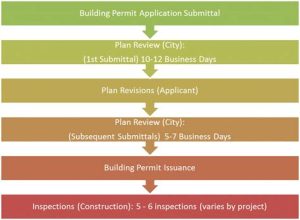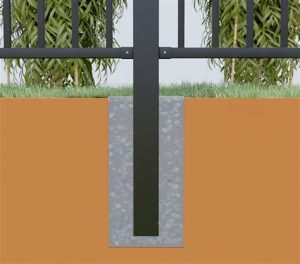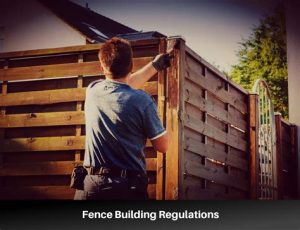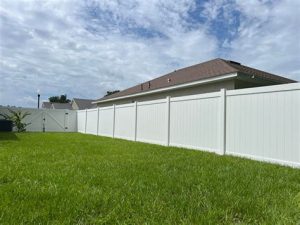Explore essential steps for fence installation, including zoning regulations, property line research, permits, material compliance, and effective communication with neighbors and HOAs.When it comes to enhancing your property’s aesthetics and security, a well-installed fence can make a significant difference. However, navigating the legal requirements surrounding fence installations can be a daunting task for homeowners. Understanding local zoning regulations, property line requirements, and permits are crucial steps to ensure a smooth installation process. Additionally, selecting compliant materials and maintaining open communication with neighbors and homeowners associations will pave the way for a successful project that aligns with community standards. In this blog post, we will delve into the best practices for keeping your fence installations legal, guiding you through each essential aspect to help you build with confidence and peace of mind.
Understanding Local Zoning Regulations
When planning a fence installation, it’s crucial to comprehend local zoning regulations. These regulations dictate how tall, how close to property lines, and what materials can be used for fences in your area. Ignoring these rules can result in fines or the need to remove your newly built fence.
Each locality has its own specific rules regarding fences. Some areas might allow a 6-foot fence in the backyard but only a 4-foot fence in the front yard. Understanding where your property falls within these guidelines will help prevent violations and promote a cooperative relationship with your neighbors.
To ensure you are compliant, it’s advisable to visit your local zoning office or check their website for the latest zoning laws and requirements. You can often find a detailed map of zoning districts that can help you determine what is permissible for your property.
Researching Property Line Requirements
When planning a fence installation, one of the most critical aspects is researching property line requirements. Understanding where your property boundaries lie is essential to avoid potential disputes with neighbors and ensure that you are complying with local laws. Misplacing your fence can lead to unpleasant conflicts, legal challenges, or even the costly process of relocation.
To begin your research, it’s advisable to obtain a copy of your property deed. This document typically includes a survey that outlines the exact dimensions of your property. Additionally, you should check with your local zoning office, as they often have records or maps that detail property lines and any relevant easements.
It’s also wise to speak with a professional land surveyor. They can help confirm your property boundaries accurately, which mitigates the risk of encroachment onto your neighbor’s land. Moreover, many communities require property lines to be defined clearly before you can obtain any necessary permits for fence installation.
Remember that, in some areas, there may be setback requirements – designated distances from property lines where you cannot build structures. Therefore, understanding both your property lines and any local regulations will enable you to proceed confidently with your fencing project, avoiding potential legal issues and ensuring a harmonious relationship with your neighbors.
Obtaining Necessary Permits and Licenses
When it comes to installing a fence, one of the most critical steps is obtaining necessary permits and licenses. Many local governments require property owners to secure these approvals to ensure compliance with zoning laws and safety standards. Failure to do so can result in fines or even the requirement to remove the fence entirely.
Before you begin your fencing project, it’s essential to check with your local zoning office or municipal website. Look for information on fence permit requirements specific to your area.
- Determine the allowable height and style for fences in your zone.
- Check if there are any setback requirements from your property line.
- Complete any necessary application forms provided by your local government.
- Submit detailed plans of the proposed fence, including materials and design.
- Pay any associated fees for the permit application.
In some cases, your homeowners’ association (HOA) may have its own set of rules regarding fence installations. Therefore, it’s wise to consult them as well, ensuring that your plans align with their guidelines.
Choosing Fence Materials Compliant with Codes
When installing a fence, one of the most crucial steps is selecting fence materials that are compliant with local building codes and regulations. These codes ensure not only the safety and durability of the fence but also its aesthetic compatibility with the surrounding environment.
- Research Local Regulations: Different areas may have specific requirements regarding fence materials, including height restrictions, visibility requirements, and types of permitted materials. Always verify these regulations with local authorities.
- Environmental Considerations: Certain materials may be more suitable for your climate. For example, wooden fences may require treatments to withstand moisture or termites, while vinyl might be more durable in harsh weather conditions.
- Durability and Maintenance: Choose materials that are known for their longevity. This not only ensures compliance but also reduces the need for frequent repairs or replacements, ultimately saving you money.
In addition to considering the local regulations and durability, it’s important to take into account the design aesthetics of your chosen materials. Fencing options range from classic wood to modern composite materials, and selecting the right one can enhance the curb appeal of your property while ensuring compliance with local codes.
Selecting the appropriate fence materials is a fundamental step in the fencing process.
Communicating with Neighbors and Homeowners Associations
Effective communication is crucial when planning any fence installation, particularly in neighborhoods governed by a Homeowners Association (HOA). Engaging with your neighbors can prevent misunderstandings and help maintain a harmonious community. Here are some best practices for ensuring clear communication.
First, it’s essential to inform your neighbors of your fence installation plans well in advance. Share details about the design, height, and materials you intend to use. This not only respects their space but also gives them an opportunity to voice any concerns. Consider hosting a small meeting or gathering to discuss the project.
Additionally, familiarize yourself with your HOA regulations regarding fencing. Many associations have specific guidelines that dictate what is permissible. Engage with the HOA board to ask questions and clarify any rules that may affect your installation. This proactive approach can help you avoid potential disputes or delays related to your fence project.
Finally, document your communications for future reference.
Frequently Asked Questions
What are the common regulations for fence height?
Most local regulations dictate that fences cannot exceed a certain height, typically ranging from 4 to 6 feet in residential areas.
Do I need a permit for my fence installation?
Yes, many municipalities require a permit for fence installation, especially if the fence exceeds a certain height or is built on the property line.
How can I determine my property lines before installing a fence?
You can determine your property lines by reviewing your property deed, obtaining a survey, or using local GIS mapping services.
What materials are commonly restricted for fencing?
Certain materials like barbed wire, electric fencing, or highly reflective materials may be restricted in urban areas due to safety and aesthetic concerns.
Are there any specific zoning laws related to fence installations?
Yes, zoning laws may dictate where and how high a fence can be constructed, often varying by property type and neighborhood.
What should I do if my fence causes a dispute with my neighbor?
It’s advisable to communicate openly with your neighbor, review property markers, and consult local regulations to resolve the issue amicably.
How can I ensure my fence complies with HOAs regulations?
Review your Homeowners Association (HOA) guidelines carefully before installation, as these rules may be more restrictive than local laws.




